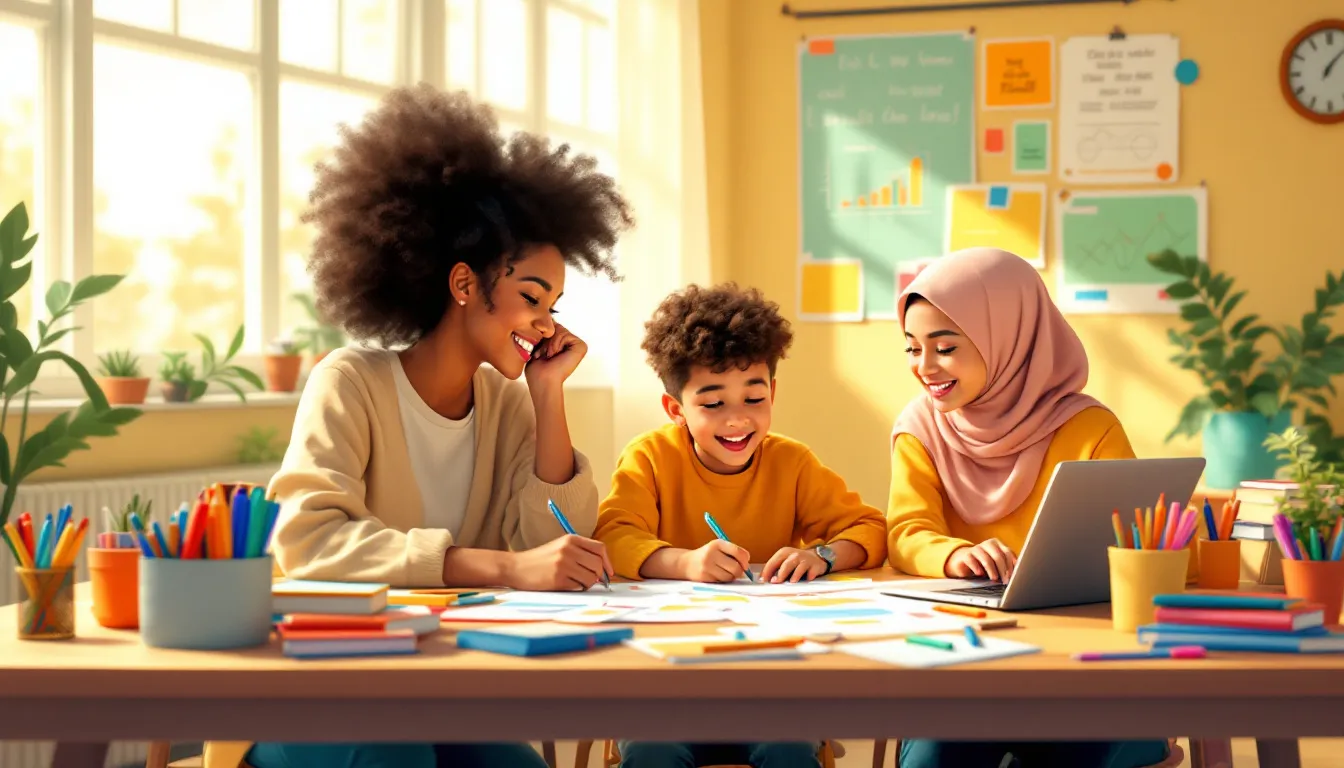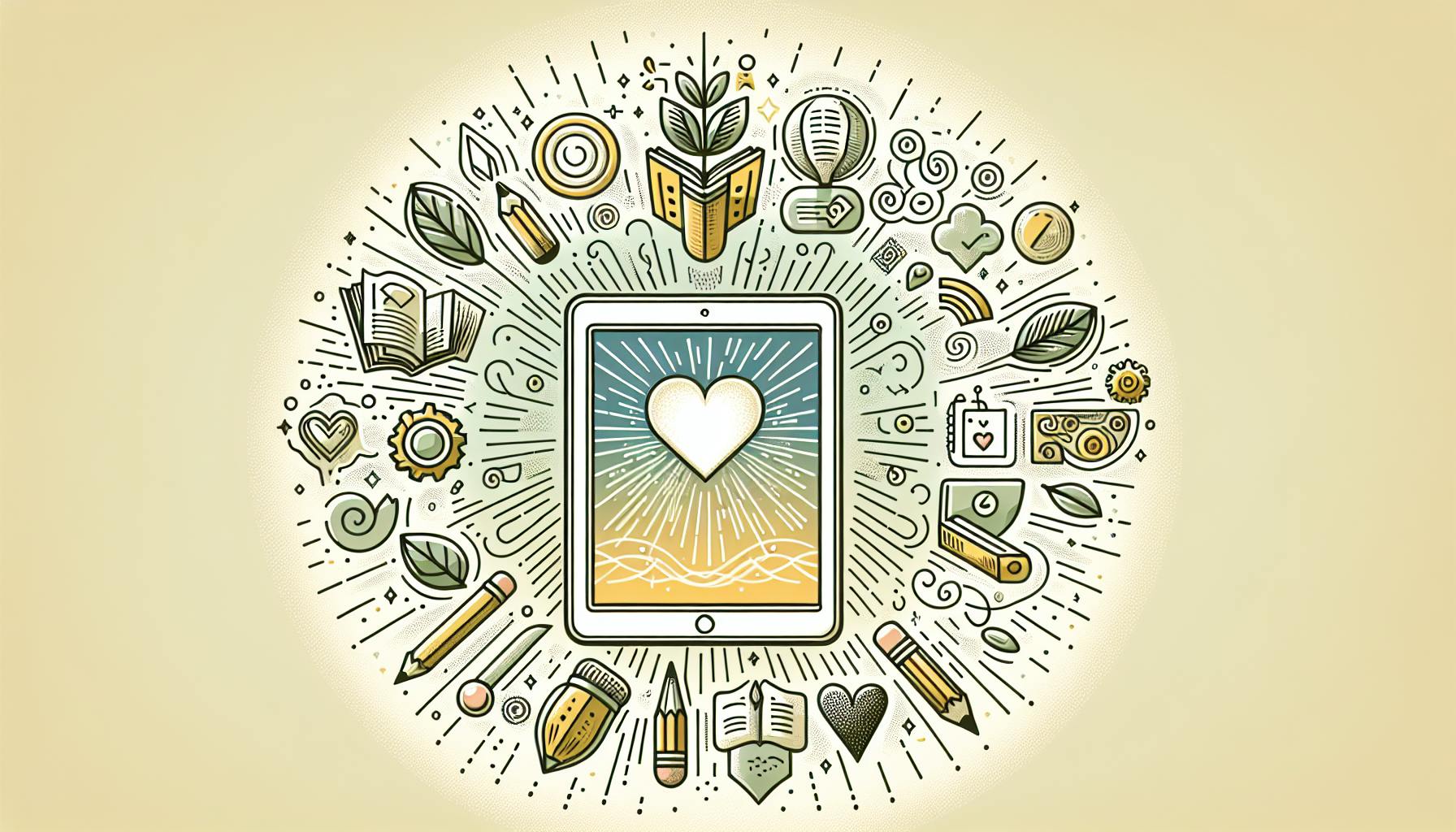We can all agree that traditional "one-size-fits-all" classroom methods often fail to meet each student's unique learning needs and interests.
The good news is, by tailoring instruction to the individual, we can unlock every child's full potential.
In this post, we'll explore key strategies for personalizing education - from differentiated instruction, to passion-driven projects, immediate feedback systems, and more. You'll discover real-world examples of schools finding success through this approach, along with tips for preparing teachers to make learning student-centered. We'll also look at how AI may shape the future of truly customized education focused on nurturing the whole child.
Introduction to Personalized Learning
Personalized learning refers to instruction that is tailored to meet the unique needs, interests, and learning styles of each student. Rather than taking a one-size-fits-all approach, personalized learning allows teachers to customize lessons, assignments, and resources to play to students' individual strengths while supporting areas for growth.
Defining Personalized Learning
Personalized learning is an approach where learning objectives, instructional approaches, and academic support are calibrated to address the specific needs and interests of each learner. Key components include:
- Flexible learning environments and schedules
- Customized learning pathways mapped to students' goals
- Individualized support and scaffolding
- Frequent data collection and analysis to measure student progress
The goal is to move away from standardized curriculum to provide more student-centered experiences.
Benefits of a Personalized Approach
Personalized learning offers many advantages over traditional classroom models:
- Increased student engagement and motivation
- Improved academic outcomes across subjects
- Development of critical thinking and life skills
- More student ownership over learning pathways
- Equity of access to learning for all students
- Better preparation for college, career, and beyond
Challenges With Traditional Classroom Methods
While traditional classrooms deliver standardized content to all students, personalized approaches recognize that individuals have diverse needs. Traditional methods struggle to:
- Accommodate different paces and learning preferences
- Provide enough 1-on-1 support
- Continuously monitor student growth
- Offer choices in lesson topics and formats
- Make real-world connections relevant to each learner's interests and aspirations
By tailoring education to meet individual needs, personalized learning aims to give every student what they require to thrive.
What is tailoring instruction to meet the learners individual needs?
Differentiation means tailoring instruction and assessments to meet each student's individual learning needs. There are several key strategies teachers can use:
Content Differentiation
- Provide reading materials at different reading levels
- Offer assignments with varying degrees of difficulty
- Allow students to work on projects based on their interests and skills
Process Differentiation
- Give students various methods to learn content (videos, hands-on activities, etc.)
- Provide multiple options to demonstrate understanding (tests, projects, etc.)
Product Differentiation
- Allow students to choose how to present what they learned (essay, presentation, model, etc.)
- Encourage students to connect learning to real-world issues
Environment Differentiation
- Create flexible spaces for individual, small group, and whole class activities
- Offer students options such as standing desks, exercise balls, or quiet corners
The key is using ongoing assessment data to determine each student's zone of proximal development - what they can do independently and with guidance. Then teachers can assign purposeful grouping and scaffold activities to nurture growth.
Differentiation leads to better student engagement, confidence, and outcomes. The extra planning is worthwhile to personalize learning and ensure no child falls too far behind.
How do would you tailor learning to meet each student's needs and interests?
Creating personalized learning experiences is key to engaging students and helping them thrive academically. As an educator, there are several effective strategies you can use to tailor instruction to individual needs and interests:
Set Clear Learning Goals
Establish clear learning objectives for lessons that align to standards. This ensures you have a benchmark to differentiate to later. Share goals with students so they have more ownership over meeting them.
Offer Multiple Learning Pathways
Design activities that allow students to engage with content in various ways catered to their learning styles. For example, offer visual, auditory and kinesthetic options.
Vary Assessments
Evaluate students through multiple methods like projects, writing, presentations, or portfolios, not just tests. This allows them to showcase understanding in ways that play to their strengths.
Personalize Content and Skills
Meet 1:1 with students to understand where they excel or need more support. Assign learning resources, materials and tasks aligned to abilities to push or scaffold as needed.
Embrace Student Voice and Choice
Incorporate student interests into activities. Allow choices in how they approach assignments, topics or formats when possible so they pursue passions.
When teachers differentiate instruction using research-backed methods, students can learn according to their individual needs and interests. This leads to better engagement, comprehension and academic growth overall.
What learning is tailored to an individual?
Personalized learning is a teaching approach that tailors education to meet the unique needs, skills, and interests of each student. The key aspects of personalized learning include:
Providing customized learning plans
- Teachers create an individualized learning plan for each student based on their academic performance, learning capabilities, motivations, strengths and weaknesses.
- Learning plans outline personalized goals, pacing, teaching methods, and assessments that best fit each learner.
Offering flexible learning environments
- Students have flexibility in how, when, and where they learn through blended models, choice of activities, and opportunities for self-paced learning.
- Flexible seating arrangements, small group instruction, and multi-age classrooms facilitate personalized attention.
Using data to drive instruction
- Regular formative assessments and progress monitoring provide immediate feedback to make data-driven decisions about instruction.
- Teachers can tailor teaching strategies by analyzing individual student data.
Promoting student ownership
- Students take ownership over setting academic goals, making choices in their learning, assessing their progress, and driving future learning decisions.
- This fosters self-directed learning skills, motivation, and engagement.
In essence, the aim is to move away from standardized education and shift the focus to custom-fit learning for each student's distinct requirements. This empowers students to maximize their potential.
sbb-itb-bb2be89
What are the 4 attributes of personalized learning?
Personalized learning focuses on tailoring education to meet the unique needs and interests of each student. There are four key elements that enable truly personalized learning:
Student Ownership of Learning
Students take an active role in setting learning goals, planning their learning pathways, and assessing their own progress. This promotes student agency, self-direction, and intrinsic motivation.
Assessment Data
Teachers utilize both formal and informal assessment data to identify students' strengths, weaknesses, and preferences. This data informs the development of customized learning plans.
Learner Profiles and Learning Pathways
Comprehensive learner profiles are created for each student, documenting their talents, needs, motivations, and goals. These profiles guide the creation of personalized learning pathways, with lessons, activities, and assessments tailored to each learner.
Flexible Learning Environments
The learning environment adapts to enable self-paced learning, extended time on tasks, choice of learning modalities, and options for demonstration of mastery. This flexibility caters to different learning styles.
Key Strategies for Tailoring Education
Teachers can utilize various techniques to personalize learning and meet the individual needs of each student. By leveraging formative assessments and learning profiles, educators can tailor their teaching methods, content, and pace to align with students' abilities, interests, and learning styles.
Differentiated Instruction Techniques
Differentiated instruction is key for accommodating different learning needs in the classroom. Strategies include:
- Flexible grouping - Group students by ability or interest for targeted instruction. Groups can be changed regularly.
- Multi-modal content - Present content in various ways like visual, auditory, kinesthetic to reach more learning styles.
- Tiered assignments - Provide assignments with varying levels of complexity and open-endedness. Students can self-select or be assigned tiers.
- Compacting - Streamline or eliminate content students have already mastered. Allow them to move on to more challenging work.
- Scaffolding - Break down assignments and activities into more manageable steps to facilitate incremental skill building.
- Choice boards - Students choose from varied activities and projects to demonstrate understanding. Enables them to play to their strengths.
Leveraging Technology for Personalizing Education
Edtech tools help facilitate personalized learning at scale:
- LMS platforms like Canvas allow teachers to create customized modules with differentiated content and assessments.
- AI-based tools provide personalized recommendations and interventions based on individual student data and performance.
- Adaptive software like Dreambox dynamically adjusts difficulty level based on student progress indicators.
- Learning analytics give real-time insight into student performance to inform personalized support.
Project-Based Learning and Passion-Driven Education
Student-centered projects aligned with interests increase engagement:
- Genius Hour - Students explore their own passion project one hour per week with teacher guidance.
- 20% Time - Students spend 20% of class time working on self-directed projects.
- Design Challenges - Students solve real-world problems using the design thinking process. Teachers facilitate and provide resources.
- Internships - Students are paired with local organizations and professionals to gain hands-on experience in a field of interest.
Immediate Feedback and Monitoring Student Progress
Ongoing feedback is vital for improvement. Strategies include:
- Exit tickets - Quick formative assessments like short quizzes given at end of class. Provides instant insight into student understanding.
- Response systems - Get real-time feedback with tools like online polls, whiteboard responses, Plickers, etc.
- Data-driven interventions - Frequently review performance data to identify learning gaps and provide targeted support to struggling students.
- Conferencing - One-on-one or small group discussions to give direct feedback, coach good practices, identify misconceptions, etc.
With the right differentiation strategies and tools, teachers can effectively tailor instruction to the unique profiles and needs of every student. The key is flexibility, ongoing assessment, and leveraging technology to provide personalized learning at scale.
Personalization in Practice
Success in a Large Urban District
Implementing personalized learning effectively in a large urban school district presents unique challenges due to the scale and diversity of students. However, with careful planning around teacher training, appropriate use of technology, and gathering student feedback, districts can make significant progress.
For example, a district serving over 50,000 students redesigned its high schools around personalized playlists that allowed students to progress at their own pace once they demonstrated mastery of concepts. Critical training helped teachers transition to coaching roles and make data-driven customizations. After 2 years, graduation rates rose 5 percentage points and chronic absenteeism fell.
The Charter School Approach to Personalized Learning
Charter schools often build personalized learning into their model from day one. They emphasize understanding each student's strengths and needs, then designing flexible learning experiences accordingly. This requires extensive teacher collaboration and horizontal career structures versus top-down management.
One successful network of charter schools gives students individual learning plans mapping out projects, internships, and community experiences that align with their goals. Students progress by presenting mastery in formal reviews with advisors rather than standardized tests. Over 90% graduate and attend college.
eLearning Experiences in Virtual Schools
Full-time online schools face the challenge of personalizing education for students they may never meet face-to-face. However, these virtual schools leverage education technology and data analytics to tailor curriculum, assignments, multimedia resources, and assessments to each learner.
One model uses AI to analyze student work and activity in the learning management system. It then recommends customized content and lesson sequence based on knowledge gaps and pacing. Early results show improved engagement and course completion rates.
Inclusion and Accommodations in Personalized Settings
Personalized learning models give schools an opportunity to improve inclusion and accommodations for diverse learners, including those with disabilities, gifted students, English language learners and more.
For example, students can be given individualized learning plans outlining goals, skills to strengthen, accommodations, assistive technology features, and plans to transition to less restrictive settings. In mastery-based schools, they progress as they demonstrate skills rather than failing entire grade levels. This promotes inclusion while still providing needed supports.
Preparing Teachers for Personalization
Personalized learning is key to meeting the diverse needs of today's students. However, transitioning to truly personalized instruction requires comprehensive teacher training and support.
Professional Development and Teacher Training
Ongoing professional development gives teachers the competencies needed to effectively personalize learning. Asynchronous online courses allow educators to build skills like:
- Data-driven instruction to track student progress
- SEL integration to support whole child development
- Understanding learner variability to tailor teaching methods
By investing in continuous teacher training, schools equip staff to provide personalized education centered around each student's unique needs and strengths.
Leverage Instructional Coaches for Differentiation Support
Dedicated coaching positions promote successful personalized learning implementation. Instructional coaches provide:
- In-class modeling to demonstrate differentiation strategies firsthand
- Co-teaching to collaboratively plan and deliver personalized lessons
- Ongoing support to reinforce new teaching methods over time
These experienced mentors empower teachers to effectively apply new skills in their classrooms.
Cultivate a Growth Mindset for Personalizing Education
Transitioning to personalized models requires an innovation-friendly culture. School leaders should:
- Encourage experimentation with new teaching techniques
- Allow mistakes as learning opportunities without judgment
- Provide time for teacher collaboration and idea sharing
By fostering a growth mindset, schools create space for teachers to iteratively develop their capacity to personalize.
Design Thinking in Developing Resilience and Self-Advocacy Skills
Design thinking powerfully instills critical mindsets in students, including:
- Resilience to productively respond to failure
- Self-advocacy to communicate needs and drive own learning
Integrating design thinking methodologies into professional learning gives teachers firsthand experience cultivating these skills. They can then authentically foster resilient, self-driven learners through classroom instruction.
Conclusion and Future Outlook on Personalized Learning
Personalized learning is a student-centered approach that allows educators to tailor instruction to individual students' needs, strengths, and interests. As technology continues to advance, personalized learning strategies enabled by AI and advanced data systems will become even more sophisticated and responsive.
Essential Takeaways for Personalizing Education
- Assess each student's current skills, learning styles, motivations and interests to inform instructional approaches
- Provide opportunities for student choice and self-direction
- Use data and feedback loops to continuously adjust instruction
- Focus on mastery-based progression, not seat time
- Foster social-emotional development and life skills alongside academics
AI and the Future of Personalized Learning
AI-driven adaptive learning platforms will allow for customized sequencing of concepts and skills for each learner. Machine learning algorithms can provide more nuanced analysis of capability gaps to enable finely tuned remediation at an individual level. While tech can enhance personalization, human connection between students, teachers and families remains critical.
Focusing on the Whole Child
While academics are important, personalized learning must also focus on building critical thinking, communication, collaboration, resilience, time management and other essential life skills. Prioritizing the whole child prepares students to thrive in college, career and civic life.
Emerging Learning Trends and Personalized Education
We will see continued blurring of formal/informal learning spaces and more opportunities for internships, apprenticeships and work-based learning. Policy shifts toward competency-based credit granting and learner-centered funding models will facilitate more personalized educational experiences.


